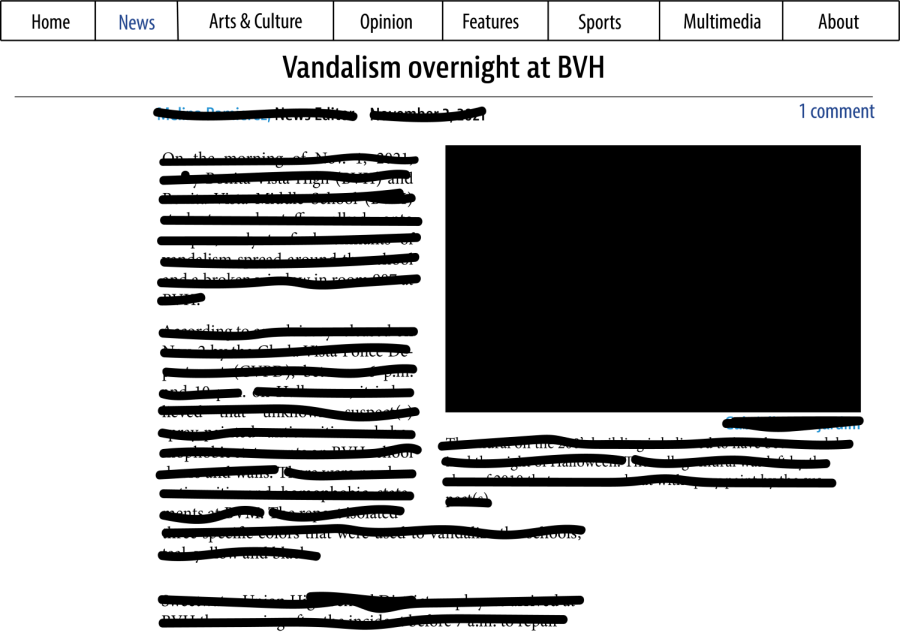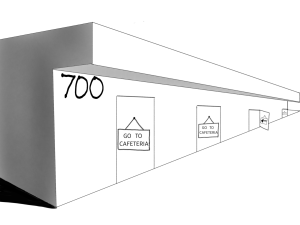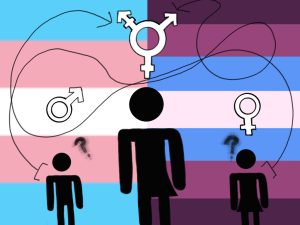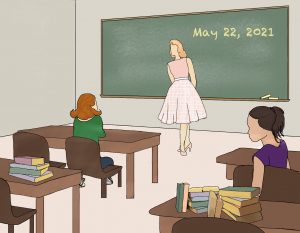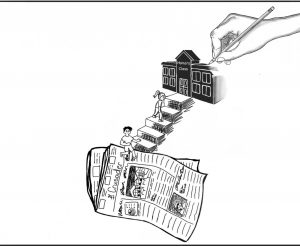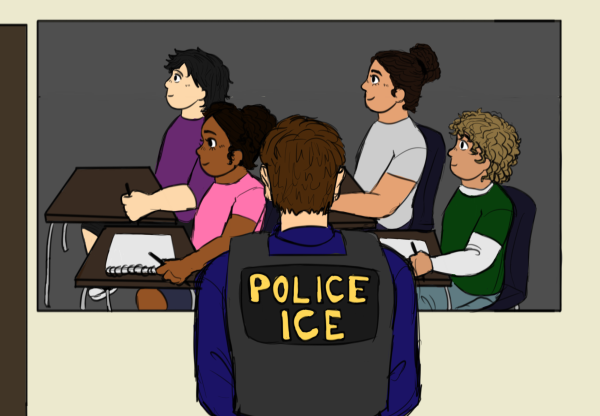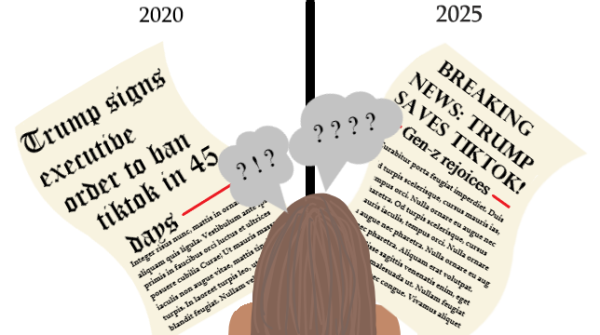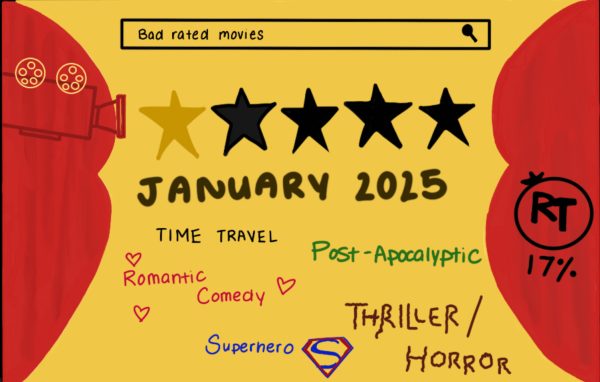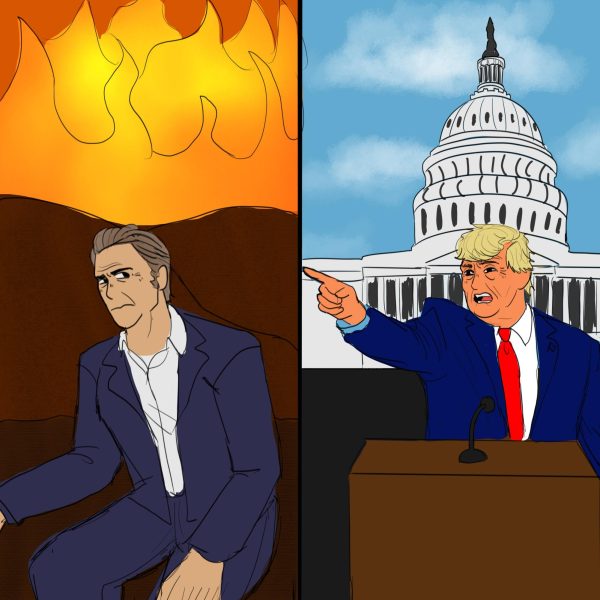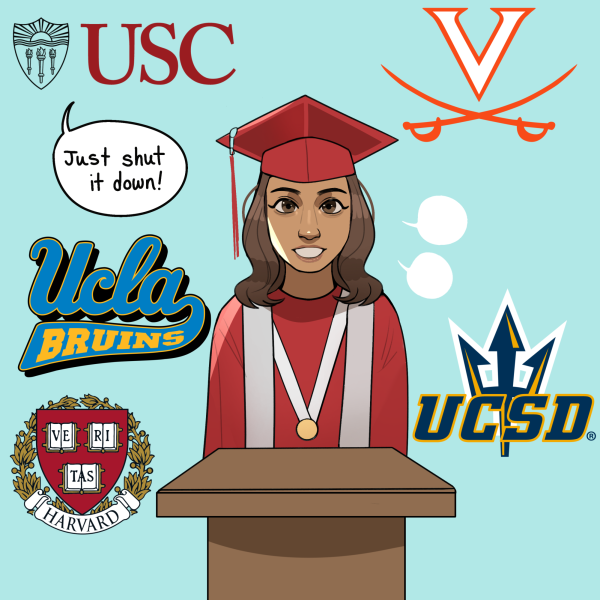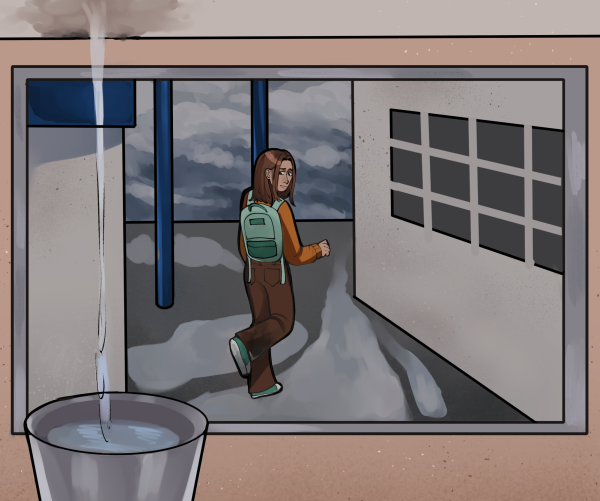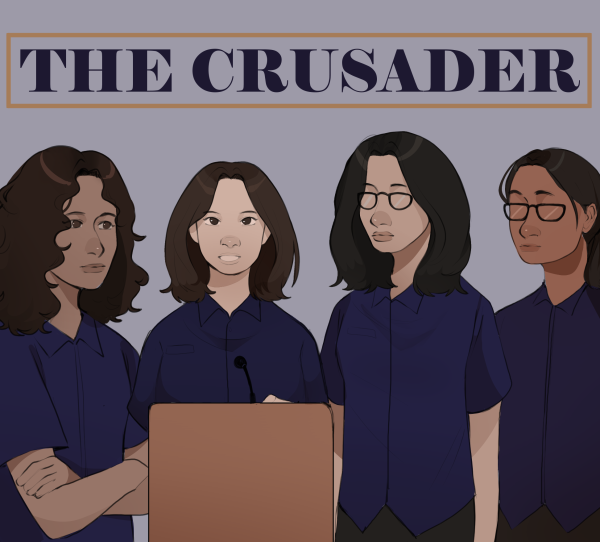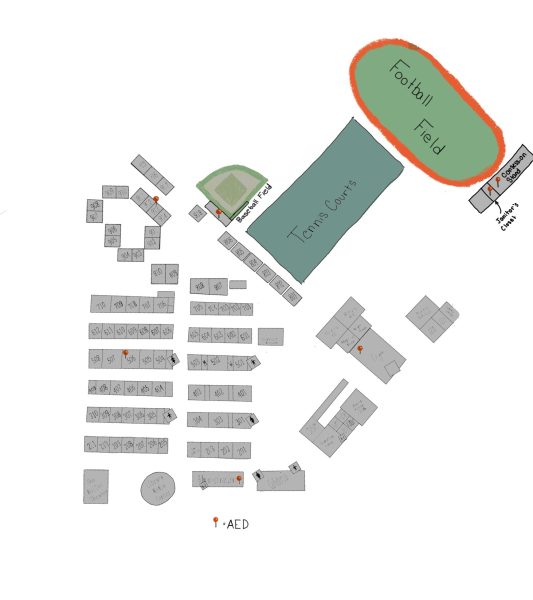Staff Editorial: The Crusader gets censored
Coverage leads to conversation, conversation leads to change
Although the Crusader has written articles about vandalism in the past, staff members were not allowed to cover a recent vandalism at BVH.
On Feb. 23, Assistant Principal Jason Josafat, Ed.D., reported through the school’s intercom instances of vandalism and student misconduct in the gym. After hearing the announcements, Bonita Vista High’s (BVH) student-run publication, the Crusader, sent a staff member to the gym to take photographs of the incident. This was the first step in informing the community about the growing concern over student misbehavior and the measures the school will take to address this ongoing issue. However, a BVH administrator prohibited the staff member from taking photographs of the clean-up, which the Crusader views as censorship and a threat to a student-led public forum protected by the First Amendment.
The First Amendment provides that “Congress make no law respecting an establishment of religion, or prohibiting the free exercise thereof; or abridging the freedom of speech, or of the press; or the right of the people peaceably to assemble, and to petition the Government for a redress of grievances,” according to the United States’ Constitution.
At BVH, students could feel the wind blowing against their jackets and the freezing cold against their cheeks as the rain began to fall harder throughout lunch on Feb. 23. As a result, BVH students wore hoodies and raincoats, while some brought umbrellas. During lunch, the extreme weather patterns continued, prompting the BVH administration to open the gym to accommodate students.
However, by the end of the lunch period and towards the beginning of fifth-period class, Josafat announced through the intercoms that students had left an immense amount of trash in the gym and vandalized the bleachers. Josafat warned students that if such misbehavior continues, the BVH administration will no longer offer refuge in the gym.
After being sent to the gym to take photographs, the staff member returned—empty-handed. According to the Crusader’s Staff Photographer Gabriella Bomjardim, after arriving at the gym, she walked towards Assistant Principal Esther Wise to introduce herself as a staff member of the Crusader. Bomjardim informed Wise of her task—take photographs of the incident to fulfill her responsibility as a journalist.
“No,” was Wises’ reply. She justified her response by describing that she did not want to further promote acts of vandalism within the school. She clarified that if students find themselves in the Newspaper, they would be encouraged to continue their acts of vandalism and wrongdoings or commit similar acts.
On Mar. 10, the Crusader reached out to Wise to ensure that the publication is representing her views as fairly and accurately as possible. In an email clarification, Wise described that the Crusader’s staff member’s telling of events was misrepresented as “That is not my recollection as to what happened… It is important that we do not add notoriety to graffiti or vandalism, the overall practice district-wide is that if there is graffiti on campus we have it removed as soon as possible to prevent other students from seeing it.”
Wise supported her justification by citing the standard protocol highlighted in the Sweetwater Union High School District’s Board Policy (BP) 5131.5(a) where “The principal or designee shall ensure that graffiti on school grounds is removed and covered as soon as possible, and if practicable before the beginning of the school day.”
However, Wise misconstrued and misrepresented a part of the district protocol as it was never mentioned in the BP 5131.5(a) that the purpose of having the acts of vandalism removed is “to prevent other students from seeing it.” In other words, the Crusader should have been permitted to take photographs and document the incident. Acts relating to vandalism are not uncommon occurrences at BVH. In the past, the Crusader has reported about vandalism and student misbehavior, even with BVH Principal Roman Del Rosario Ed.D. providing us with photos.
Wise added that students could combat the vandalism issue on campus by submitting anonymous complaints to the Chula Vista Police Department (CVPD) via the P3 Tips application. The P3 Intel is a tip management system that allows the community to submit anonymous tips about crime-related acts to Crime Stoppers programs and law enforcement agencies. As a result, the CVPD could take action and address the concerns brought up by the community.
The failure to throw light on the incident due to the BVH administration prohibiting the actions taken by the Crusader’s staff member is an act of censorship of the press. The American Civil Liberties Union defines censorship as “the suppression of words, images, or ideas that are ‘offensive’. [Censorship] happens whenever some people succeed in imposing their personal political or moral values on others”. In simpler terms, censorship refers to the suppression of information, ideas or artistic expression by people; in this case, by student-journalists.
However, the intent of the Crusader staff is to inform, entertain and, in this case, discuss current issues that concern the BVH community in a professional, unbiased manner. The thoughts expressed are not necessarily those of BVH or the Sweetwater Board of Education.
Being prohibited from taking photographs and educating the BVH community about important issues plaguing the community is detrimental. The censorship of the press limits the community’s access to important information and restricts journalists’ freedom of expression. When freedom of speech is restricted, individuals are then discouraged to speak against injustices and evils occurring in society.
As explained by the Union of International Associations, a research institute and documentation center, “Censorship may lead to lack of information and subsequent development of apathy, ignorance, conformism and general stagnation. It may threaten democracy and encourage subversive activities.”
In the case of New York Times (NYT) Co. vs. United States (U.S.) 403 U.S. 713 (1971), the U.S. Supreme Court ruled 6-3 in favor of the NYT and defended the First Amendment right of free press against prior restraint by the government.
During the U.S’s involvement in the Vietnam War, the NYT obtained a report that featured government discourse about the war. However, the U.S. government ordered the NYT not to publicly publish the documents, describing that the publicizing of the documents would jeopardize national security. The NYT appealed, proclaiming that prior restraint violated the First Amendment and posed threats to a free press.
This case conveys the court’s ability to discern the balance between the right to a free press as well as the need for the government to uphold national security. Similar to BVH, the Crusader should not have been barred, censored, disrespected and silenced by the BVH administration from reporting. The intent of the Crusader’s reporting was never to celebrate the event. Instead, it was our objective to shed light on the issue, acknowledge it is a problem and discuss how the administration aims to address the problem.
As African-American abolitionist Frederick Douglass once put it, “To suppress free speech is a double wrong. It violates the right of the hearer as well as those of the speaker.”
In order for the Crusader to fulfill its mission, the organization must gain support from fellow community members, including the BVH administration. Moving forward, the Crusader hopes to continue reporting issues that affect the BVH community without experiencing the negative implications of media censorship. The best proponent to productively combat problems happening in society today is through unrestricted reporting and meaningful conversation, not through censorship.
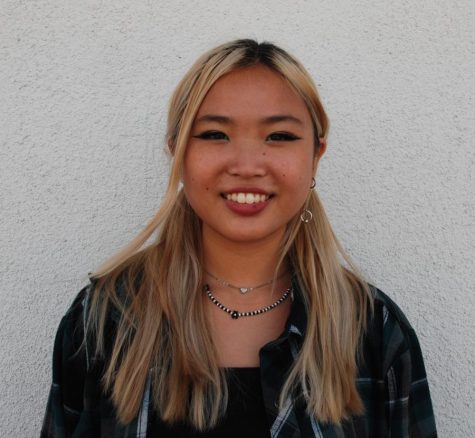
This year, I am co-Editor-in-Chief for 2022-2023. I’m a senior and a second-year Crusader staff member. Last year, I enjoyed my time serving as...

